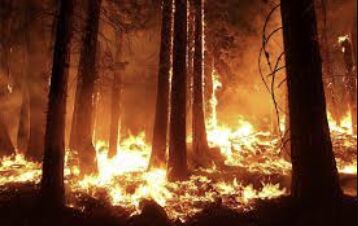Deadliest Wildfire in Over a Century: Maui's Lahaina Fire Claims 90+ Lives, Spotlights Increasing Climate Change-Driven Blaze
The increasing frequency and intensity of wildfires in the US, have drawn focus on recent major incidents and their causes, including power equipment, burning trash, and lightning strikes. Understanding these causes is crucial in preventing future devastating wildfires.
A fast-moving fire in Maui's historic town of Lahaina has claimed over 90 lives, making it the deadliest wildfire in the US in over a century. Although the cause of the blaze is still under investigation, power equipment in the area is facing increasing scrutiny. This tragic incident highlights the intensifying and more frequent wildfires across the nation, largely driven by climate change-induced prolonged droughts.
While the initial causes of wildfires can vary, such as sparks from downed power lines, lightning strikes, or even a carelessly discarded cigarette butt, the end result is the same once vegetation becomes dry and susceptible to ignition. It's crucial to examine recent major US wildfires for a better understanding of this alarming trend.
The Camp Fire, which occurred in November 2018, devastated the town of Paradise in California, claiming more than 80 lives and destroying over 18,000 structures. The fire was attributed to power lines operated by PG&E Corp, leading to the company eventually filing for bankruptcy in 2019.
The August Complex Fire, the largest in California's history, burned for nearly three months in late 2020, destroying over 1 million acres. The fire was ignited by lightning strikes, according to the US Forest Service, and spread across several counties, becoming the second-largest fire in US history. In December 2021, the Marshall Fire in Colorado destroyed over 1,000 homes, becoming the most destructive fire in the state's history.
The fire was a result of two blazes, with the first originating from ignited scrap wood and tree branches at a home, and the second likely caused by hot particles from a power line. Another significant wildfire, Hermits Peak and Calf Canyon, occurred in New Mexico during the spring and summer of 2022, scorching over 340,000 acres.
Forest service officials determined that the fire was caused by smoldering debris from a controlled burn in January. The US Forest Service chief, Randy Moore, apologized for the agency's accidental triggering of the flames, emphasizing the unprecedented conditions caused by climate change.
Power lines, burning trash, and lightning are identified as common causes of wildfires in the US. Damaged or malfunctioning power lines can spark and ignite nearby vegetation, especially during dry and windy conditions. Burning trash can quickly get out of control and spread to surrounding vegetation when done in yards or open areas, leading many states to prohibit such practices.
Lightning strikes on dry vegetation can also spark and spread fires, with firefighters working diligently to contain and prevent their spread. It is imperative to understand these causes and take preventative measures to protect communities and natural resources from the devastating effects of wildfires. As wildfires continue to pose a serious threat, addressing the factors contributing to their occurrence becomes paramount in mitigating their impact.





